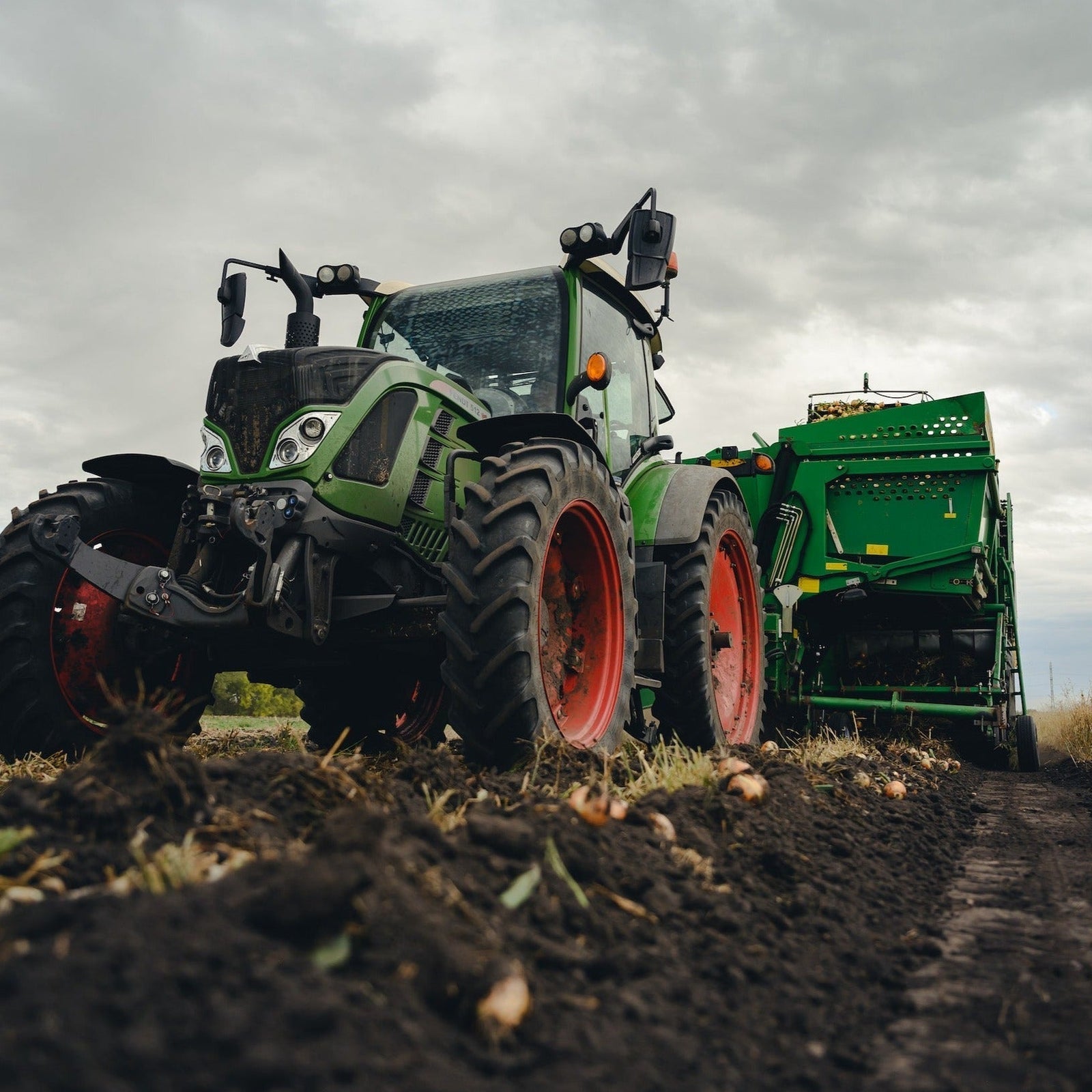Best Practices for Farmer’s Machinery Maintenance

Introduction: Why Proper Machinery Maintenance Matters
Farm equipment is the lifeblood of agricultural operations. Tractors, harvesters, and irrigation systems endure harsh conditions, including dirt, dust, extreme temperatures, and heavy workloads. Without proper maintenance, these machines face breakdowns, costly repairs, and reduced efficiency, leading to lost productivity and increased operational expenses.
To keep farm machinery running at peak performance, farmers must adopt a proactive maintenance strategy. In this guide, we’ll cover:
✅ Essential maintenance tips for farm equipment
✅ How to prevent costly repairs and breakdowns
✅ The best lubrication practices for longevity
✅ A seasonal maintenance checklist for farmers
Whether you’re managing a small family farm or a large-scale agricultural operation, these best practices will help you maximize uptime, save money, and improve efficiency.
1. Regular Inspections: The Foundation of Preventative Maintenance
Routine inspections are the first line of defense against machinery failure. Detecting minor issues before they escalate prevents costly breakdowns.
🔍 What to Inspect Regularly
✅ Fluid Levels: Check engine oil, hydraulic fluid, and coolant levels. Low fluids can cause overheating and damage.
✅ Belts & Hoses: Look for cracks, wear, and tension issues.
✅ Tires & Tracks: Proper tire pressure ensures fuel efficiency and reduces soil compaction.
✅ Battery Health: Clean terminals and check voltage to prevent startup issues.
✅ Filters: Replace clogged air and fuel filters for optimal performance.
✅ Lubrication: Apply high-performance lubricants to prevent excessive wear and tear.
💡 Pro Tip: Use a maintenance log to track inspections and identify recurring issues.
2. The Role of Lubrication: Prevent Friction & Extend Machinery Life
Lubrication is essential for reducing friction, preventing overheating, and ensuring smooth operation. Using the right lubricants for different components minimizes wear and prolongs equipment lifespan.
🛢️ Best Lubrication Practices
- Use high-quality lubricants designed for farm equipment.
- Apply grease to pivot points, bearings, and joints regularly.
- Check hydraulic fluid to ensure smooth operation of moving parts.
- Clean excess dirt before applying lubricants to avoid contamination.
🚜 Want to optimize lubrication for your farm equipment? Check out Tripakus Lubricants for advanced lubrication solutions.
3. Keep It Clean: Prevent Dirt & Debris Damage
Dirt, dust, and crop residue can clog filters, damage seals, and cause overheating. Regular cleaning prevents these issues and keeps machinery running efficiently.
🧼 Cleaning Best Practices
✅ Use compressed air or pressure washers to remove dirt from radiators, filters, and engine compartments.
✅ Inspect and clean hydraulic systems to prevent leaks and contamination.
✅ Store machinery in a dry, covered area to reduce exposure to moisture and rust.
4. Seasonal Maintenance Checklist: Preparing for Changing Conditions

Agricultural machinery operates under varying seasonal conditions. A seasonal maintenance schedule ensures that equipment remains in top shape all year long.
🌱 Spring (Planting Season) Checklist
✔ Inspect seeding equipment, tillers, and sprayers.
✔ Check tire pressure and calibrate GPS systems.
✔ Lubricate hydraulic arms and moving parts.
☀️ Summer (Heavy Usage Period) Checklist
✔ Clean air filters to prevent overheating.
✔ Check engine cooling systems and fluid levels.
✔ Tighten loose bolts and inspect belts for wear.
🍂 Fall (Harvest Season) Checklist
✔ Service combines, balers, and grain carts.
✔ Sharpen cutting blades for smooth harvesting.
✔ Drain and replace hydraulic and transmission fluids.
❄️ Winter (Storage & Off-Season) Checklist
✔ Store machinery in a dry, protected shed.
✔ Remove batteries and store them in a warm location.
✔ Apply rust prevention coatings to metal surfaces.
(Further Reading: Winterizing Your Farm Equipment)
5. Use Telematics & Predictive Maintenance for Smarter Farming
Technology has transformed agriculture, making predictive maintenance more accessible. Telematics systems help monitor machinery performance in real-time.
📡 Benefits of Telematics in Farm Machinery
✅ Remote monitoring of engine health, fuel levels, and GPS location.
✅ Receive alerts for maintenance needs before breakdowns occur.
✅ Optimize fuel usage and reduce operational costs.
💡 Pro Tip: Invest in IoT-enabled sensors to track lubricant conditions and maintenance needs automatically.
(Check out: How Smart Farming is Revolutionizing Agriculture)
6. Store Machinery Properly to Prevent Long-Term Damage
Proper storage prevents exposure to moisture, pests, and rust.
🏠 Best Storage Practices
✔ Keep machinery indoors to protect it from extreme weather.
✔ Use fuel stabilizers to prevent fuel degradation.
✔ Disconnect batteries and keep them charged.
🚜 Learn more about proper farm equipment storage at Farm Progress.
Final Thoughts: Maximize Your Farm’s Efficiency with Proper Maintenance
Maintaining farm machinery is not just about preventing breakdowns—it’s about ensuring efficient, cost-effective, and high-yield operations. By following best practices in lubrication, cleaning, seasonal maintenance, and predictive technology, farmers can:
✔ Extend equipment lifespan
✔ Reduce costly downtime
✔ Improve operational efficiency
✔ Optimize fuel and energy use
By integrating Tripakus lubricants and modern telematics solutions, farmers can streamline maintenance, ensuring their machinery operates at peak performance year-round.
🚀 Ready to take your farm equipment maintenance to the next level? Visit Tripakus.com for high-performance lubrication solutions!

